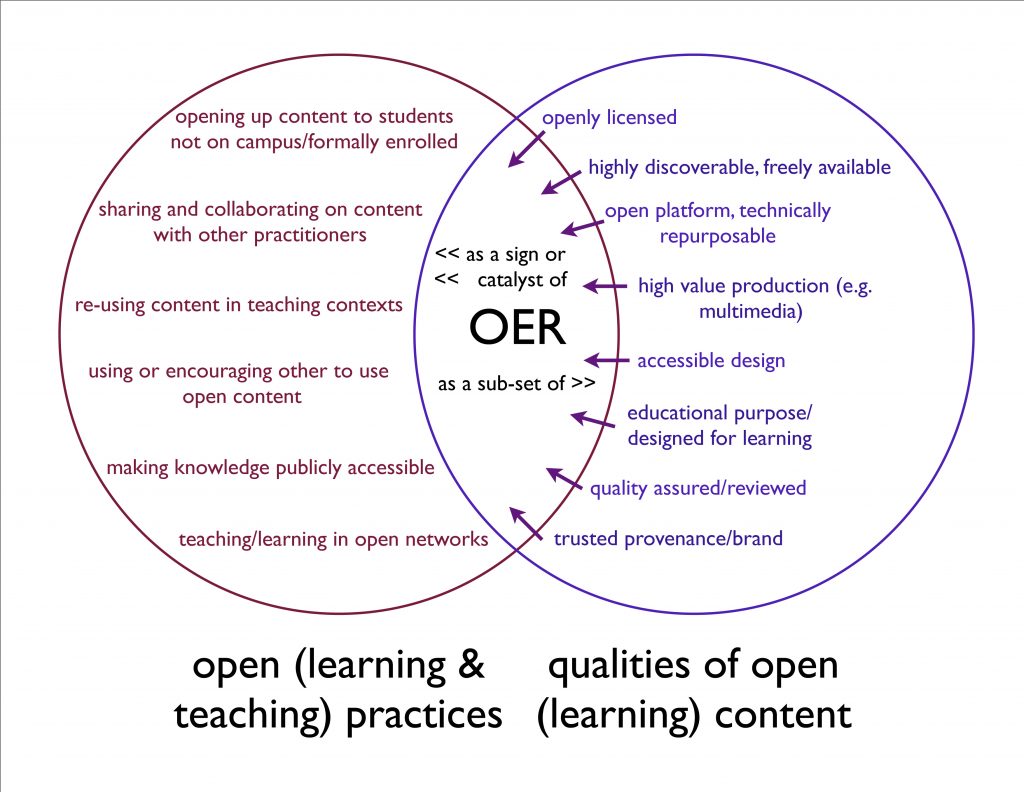Equity in OER Publishing by Josie Gray
OER and Pedagogy
Josie Gray
Press play on the following media player to listen to the podcast version of this chapter or read the text below.
In this section, I will be talking about how pedagogy fits into OER (or doesn’t). This section is pretty short, so a lot more work is needed here on my part. If you have suggestions of things I should be reading, please send them my way.
So let’s talk about pedagogy. This is probably the area that I know the least about. I am not a teacher, and I am not an instructional designer. But I have the privilege to be able to work with and learn from others who are, and this is an important topic to discuss considering open educational resources are supposed to be tools for teaching and learning.
In 2015, following an OpenEd conference in Vancouver, B.C., Robin DeRosa, the Director of the Open Learning & Teaching Collaborative at Plymouth State University, published a blog posted titled “Open Textbooks? UGH.” In this post, she offered a critical perspective on the conference’s apparent focus on textbooks and creating content. In this post, Robin argues that textbooks are not great pedagogical tools, and that,
Textbooks, if we don’t re-theorize them, have generally (just) been repositories for the master’s ideas. Students absorb textbook content and achieve “mastery.” (Call it “competency,” whatever.)
Instead, Robin talks about open pedagogy. There are many definitions and understandings of open pedagogy, but one I will offer is pulled from a larger discussion of open pedagogy provided by Rajiv Jhangiani and Robin DeRosa in the book A Guide to Making Open Textbooks with Students:
We might think about open pedagogy as an access-oriented commitment to learner-driven education AND as a process of designing architectures and using tools for learning that enable students to shape the public knowledge commons of which they are a part.
Basically, open pedagogy aims to enable students to take an active role in their learning and move towards becoming knowledge creators rather than just knowledge consumers.

Robin is not the only person to argue for a greater attention to pedagogy rather than content. Her blog post generated a lot of debate, and similar arguments are made research literature.
But the reality is that textbooks are still widely used in post-secondary education, and because I work in publishing and not in instructional design or teaching, I am going to leave these arguments aside for now. However, they do make important points that need to be considered.
If we assume OER in themselves have value, we can look specifically at how to design a resource to support learning. This includes things like the organization and pathway through topics, the scaffolding of information, providing clear leaning objectives and key takeaways, and providing opportunity for reflection and application of new ideas and information. Again, I am not an instructional designer, but I have seen OER that are poorly organized, include walls of text, and make it hard to determine what is important or apply concepts to a current or personal context.
And that’s the end of this section on OER and pedagogy. Short and sweet, as promised. Thank you for listening. You are welcome to go explore one of the other sections or skip to the end to review the conclusion. If you have any thoughts you’d like to share with me, please do reach out.
Media attributions
- “OER Venn Diagram” © Beetham et al., (2012) is licenced under a CC BY-NC 4.0 Licence.


Feedback/Errata